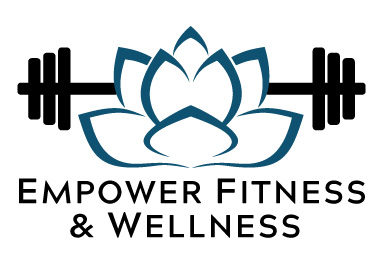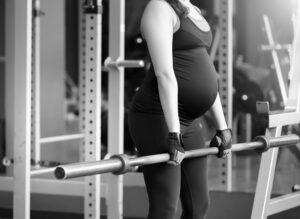When it comes to working out while pregnant, there is countless mis-information out there. Here at Empower, I encourage pregnant women to break down those myths and continue to stay fit throughout pregnancy. Your baby, body and mind will thank you.
Here’s a look at the more popular myths about exercise and working out during pregnancy, prenatal fitness, and tips on how to maintain a healthy workout routine while pregnant.
Rule number one regarding prenatal fitness is whatever you were doing before pregnancy, keep doing it! The American College of Obstetrics and Gynecology (ACOG) actually encourages a moderate level of exercising while pregnant. There are a few exceptions to this rule (we will get to that later), but it’s important to maintain the level of fitness you achieved before becoming pregnant. So go ahead and continue exercising during pregnancy.
It doesn’t matter if you are an ultra-fit individual or enjoy moderate workouts you can still workout at the same intensity well into your third trimester if your body allows for it. Just be sure not to push yourself and increase your fitness level, this could endanger your baby or cause you injury. Instead focus on maintaining your current fitness level.
Keeping fit while pregnant not only builds strength to help you through labor, but it also decreases your chances of developing pregnancy and post-pregnancy depression. Keep those endorphins flowing for both your mental and physical health.
It is true that the combination of your organs repositioning during pregnancy and the added weight of the baby put additional pressure on the vena cava when you lie on your back, especially during the third trimester. However, one of the key factors to consider is how much time you're spending on your back.
Glute bridges, chest presses or popular yoga poses like happy baby only require you to lie on your back for one to two minutes. For most women this short amount of time won’t cause any problems. If you do get dizzy, many back exercises are easy to modify with pillows or an inclined position.
If you enjoy back exercises and you aren’t experiencing any problems, then likely it’s safe to continue doing these the entirety of your pregnancy. Of course if you have any questions or other hesitations, talk to your healthcare provider.
The most recent guidelines from ACOG share that one way to test your exertion is to use the “talk test”. As long as you can carry on a conversation while you are exercising, you are likely not overexerting yourself.
You should feel comfortable and capable of working out at the heart rate you’re at. If not, back it down.
There are a few exceptions to this rule. First, it’s best to discontinue contact sports like soccer because of the high risk of getting hit hard in the stomach. Activities like horseback riding and lead climbing should be done by experts only and these activities may need to be halted once you develop a baby bump. However, that doesn’t mean you still can’t run or do aerobics.
It’s important to note that after 20 weeks a few things should change. Your baby is growing and that throws off your balance. Avoid working out on unstable surfaces. When you are pregnant, you begin to release a hormone called Relaxin. Relaxin enables joint relaxation, opening you up to joint injuries. In your third trimester the Relaxin, combined with the added weight of the baby, puts you at risk for injury.
At this point you should be working out in a controlled environment like a gym, using stable surfaces (no more Bosu balls), and don’t push your body. Be sure to rest every other day or engage in lower-intensity workouts during this time. You can still lift weights, hit the treadmill and engage in lower impact workouts like top rope climbing or swimming.
But even if it doesn’t, skipping core work while you’re pregnant is not the solution. Core strength is very important during pregnancy, specifically around possibly decreasing an arched lower back as the baby grows.
I recommend incorporating a variety of core exercises such as cat-cows and, for some, planks. Only do planks if you can contract your abs. To test, come to all fours near a mirror. Try to contract your abs toward your spine. If you can visibly see the difference with your belly rising up toward your spine, try a plank and see if it feels OK to you. If you do not see your abs moving toward your spine, do not do planks.
Some women love to wear a belly band for added support when they lift. If you weren’t a weight lifter prior to pregnancy, now isn’t the time to start heavy lifting. You can stick with lower weights and higher reps, but remember, you don’t want to overdo it. Consult a pregnancy fitness specialist if you have any questions.
All women need to stay active while they are pregnant, but remember, growing a baby is hard work. It’s perfectly fine to work out three to five days a week but remember to take it easy on some days. You don’t want to overload your muscles or joints. If your body says “take a nap,” then swap your workout from some much-needed rest. The key to staying fit while pregnant is to work out smarter, not harder.


 What is Your Pelvic Floor?
What is Your Pelvic Floor?
